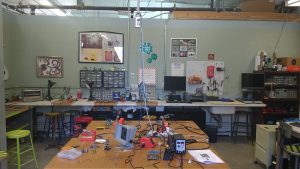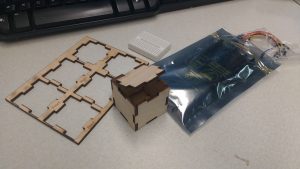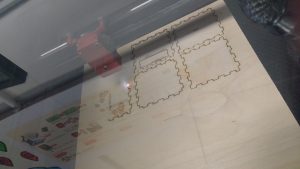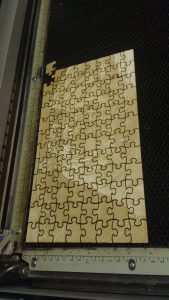This past week, we were given a grand tour of the Fab Lab on campus. The Fab Lab is a Maker Space available to students and people within the community. Plentiful of technology are provided at the lab including: work spaces for 3D printing, BioHacking, electronics, sewing to name a few. They offer workshops, summer camps for children, and open hours for you to kick start your projects.

During the next 3 weeks, we will attend different workshops to learn programming, designing, electronics assembly, and more. By the end of the workshops, we will be able to put together an electronic box that can light up depending on certain movements in the environment.

I took part in the designing phase this week, where we used open source software Inkscape to add special features for our box. As a vector graphics editor, Inkscape can also be used for many other purposes, such as sticker designs and creating logos. Using http://boxdesigner.connectionlab.org/, we added parameters as inputs and were given a laser cutting file in .PDF. The file served as a template for our box, which we imported into Inkscape. The shape tool allowed us to add holes and squares to our box template, which would later be used to connect the electronic hardware.

Then, we selected b&w image files online and imported them into the software to rasterize. Once our designs were completed, we sent our files to the laser engraving machine to watch the magic unfold. Our designs from the computer screens were being engraved onto the piece of wood. Another project that was being worked on at another laser machine was an intricate puzzle piece.

Different laser cutters have other properties that allow you to engrave in glass and metal. More complex and intricate designs require more time and high degree precision. In addition, there are machines out there that can cut textiles in a cost efficient way saving resources and time. Small laser cutters & engravers run from a few hundred dollars, while larger machines run in the thousands price range.
I cannot wait to see the final product that will be made with my own two hands. The Fab Lab is a great resource and environment to experiment ideas and learn new skills; I definitely recommend checking it out along with other makerspaces in your area!

